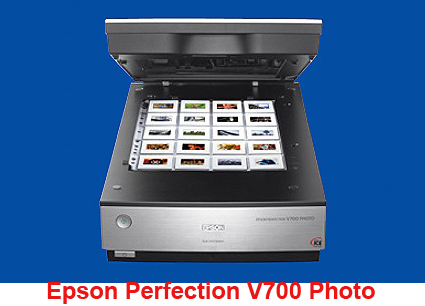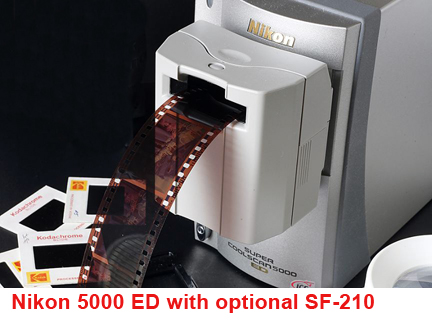Question
I need to buy a high resolution scanner to digitize tons of slides and negatives when I retire in September. Can you compare film scanners and flatbeds with a transparency adapter for performance in creating digital files from 35mm film, suitable for making 13×19 inch prints with an Epson 2880? Which type would be the best bet? Philip Renaud
Answer
Thanks for your question, Philip. A full assessment would require a test of several brands/types of scanners, a major undertaking that’s not possible for the Q&A. But based on my research — and experience with scanners of both types — I’d say you should be satisfied with a top-of-the-line flatbed or a dedicated a film scanner. Frankly, such equipment is not inexpensive but either type should provide the level of quality you’ll want from the scans for making 13×19″ prints.
Many inexpensive flatbeds (with film adapters) boast surprisingly high resolution and they can produce a large image file with acceptable quality for some purposes. However, for a photo enthusiast’s needs, a flatbed like the Epson Perfection V500 Epson Perfection V500 Photo Scanner($180) or the CanoScan 8800F Canon CanoScan 8800F Color Film/Negative/Photo Scanner (2168B002)($172) would be the most affordable solution for scanning 35mm film. (Look for some reviews of these machines with a Google search.)
Because a 35mm slide or negative is extremely small compared to medium format film, you’ll probably want a high-end model (in a flatbed) for superior results, such as the Epson Perfection V700 Photo Epson Perfection V700 Photo Color Scanner($500, reviewed at Imaging Resource)
This scanner features a dual lens system, true optical resolution of 6400dpi, 16-bit colour depth (important for those using Photoshop CS4), Digital ICE software for dust and scratch removal and a high Dmax of 4.0 (for great highlight and shadow detail). Epson also makes the similar V750-M Pro Epson Perfection V750-M Pro Color Scanner($720, reviewed at Shutterbug) with fluid mounting capability to maximize focusing accuracy and even more sophisticated software.
Several companies make relatively affordable, high-res 35mm film scanners; Plustek is the leader in this category. Their OpticFilm 7500 series models, like the 7500Ai Opticfilm 7500I Ai 7200 Dpi Silverfast Ai Studio Isrd($487, reviewed at Computer Times) has also received very favorable Customer Reviews. This 7200dpi scanner is loaded with features, including Multi-sampling (for maximum detail), 16-bit color depth, a Dmax of 3.5, tools for color management and calibration, a remarkably versatile/effective LaserSoft software suite, and more.
Although I have not tried the Plustek models, I am familiar with the Nikon Super Coolscan 5000 ED Nikon Super CoolScan 5000 ED Film Scanner($1080, reviewed by Thom Hogan).
This scanner can produce amazing quality with an ED glass lens, a two-line linear CCD with true 4000dpi optical resolution, a 16-bit A/D converter and an incredibly high Dmax of 4.8. The 5000 ED includes Digital ICE4 Advanced software with four image correction technologies for very “clean” scans.
The Nikon machine also accepts a Slide Feeder SF-210 (about $500) accessory, for batch-scanning 50 mounted slides, based on the same settings, made in advance. While some owners have complained about jamming (see Thom Hogan), this device might be useful if you plan to digitize thousands of slides.

While a $180 flatbed with built-in film adapter can generate good results -- especially from medium format film -- a high-end model like the Epson V700 (or 750-M Pro) is more likely to satisfy serious photographers who plan to make oversized prints from scans of small or large film formats. A flatbed is certainly versatile but for the ultimate in image quality from a 35mm slide or neg, consider the Plustek 7500 series or the Nikon Super Coolscan 5000 ED; the latter is used even by some commercial labs.

The post Q and A: What kind of scanner will fit my needs? appeared first on Photocrati.